
Penalties for driving at a prohibiting traffic light
Content
The first thing we learned about the rules of the road as children was the meaning of the three colors of traffic lights. And this is absolutely justified, since the health and even the life of the driver, passengers and others depend on the strict observance of simple rules when crossing the road. For this reason, severe sanctions are set for driving at a prohibitory traffic light, up to and including suspension from driving. Motorists, on the other hand, should clearly know the position of the law on this matter and be able to protect their rights in case of unreasonable prosecution.
What is considered to be passing a traffic light
Section 6 of the Rules for Driving on Public Roads is devoted to traffic lights or traffic controllers. It details the well-known rules about the meaning of each color of a traffic light or traffic controller gestures:
- green signal allows movement;
- a green flashing signal allows movement and informs that its time expires and a prohibition signal will soon be turned on (digital displays can be used to inform about the time in seconds remaining until the end of the green signal);
- a yellow signal prohibits movement, except for the cases provided for in paragraph 6.14 of the Rules, and warns of the upcoming change of signals;
- a yellow flashing signal allows movement and informs about the presence of an unregulated intersection or pedestrian crossing, warns of danger;
- a red signal, including flashing, prohibits movement.
Article 12.12 of the Code of Administrative Offenses (CAO), which sets out the sanctions for running a red light, is worded in the most general way. For this reason, not only inattention to a red signal is a violation of the law, but also:
- exit at the intersection at a yellow or flashing yellow traffic light. The only case in which driving on a yellow signal is legal is the inability to stop moving without using emergency braking;
- passage with a forbidding gesture of the traffic controller: raising his hand up;
- stop behind the stop line;
- driving on a green light without taking into account the additional traffic light signal with an arrow to turn.

How is a violation recorded?
To date, there are two main ways to fix traffic violations, including driving on a prohibitory signal:
- traffic police inspectors;
- video recording cameras.
Recording a violation by a traffic police officer
The first method is traditional and therefore familiar to car owners and other road users. The main document in accordance with which traffic police officers act is the Administrative Regulations (Order of the Ministry of Internal Affairs No. 664 of 23.08.17/84/XNUMX). According to paragraph XNUMX of this document, one of the grounds for stopping a vehicle is signs of an offense in the field of road traffic.
Here are a few steps that a traffic policeman must follow when stopping a car for a traffic violation:
- According to paragraph 89, the employee must immediately approach the driver, introduce himself, state the reason for the stop.
- After that, he has the right to request the documents necessary for registration of the offense.
- Then, by virtue of paragraph 91, the inspector must tell what violation was committed and what it consists of.
- Further, the official draws up a protocol on an administrative offense in accordance with Art. 28.2 of the Code of Administrative Offenses of the Russian Federation.
- When drawing up the protocol, you should be explained your rights and obligations in accordance with the law.
- Finally, after drawing up the protocol, you have the right to familiarize yourself with it and submit comments and explanations that should be attached to the main text of the protocol.
It should be noted that any violation of the established procedure for bringing to administrative responsibility can be used by the car owner to successfully challenge the imposed punishment.

It is important to remember that the traffic police inspector has no right to demand that the driver get out of the car for a conversation, except in the following cases (clause 93.1 of the Regulations):
- the driver has signs of intoxication and (or) a disease state;
- to conduct a personal search, inspection or inspection of a vehicle and cargo;
- for carrying out in the presence of the driver (owner of the vehicle) reconciliation of the numbers of units and units of the vehicle with the entries in the registration documents;
- when his participation in the implementation of legal proceedings is required, as well as in assisting other road users or police officers;
- if it is necessary to eliminate a technical malfunction of the vehicle or a violation of the rules for the carriage of goods;
- when his behavior poses a threat to the personal safety of an employee.
Video recording
Even the most advanced video recording systems can fail due to a computer glitch or a virus program running on the system. Therefore, even a violation filmed on video can be challenged if there are grounds.
The cameras currently operating can be divided into two subspecies:
- video cameras used by traffic police officers;
- stationary cameras operating in automatic mode.
It makes no sense to dwell on the use of the former, since if the camera is used by the inspector, only he himself will have the right to bring the violator to justice in strict accordance with the procedure set forth in the first part of this paragraph. Recording from the surveillance camera in this case acts only as additional evidence of the fault of the car owner.
Cameras of automatic video recording have a much more interesting mechanism of action. They are placed on the most emergency parts of public roads: crossroads, pedestrian crossings, expressways. It is especially important in the context of this article that video recording systems are installed at almost all traffic lights and railway crossings.
Today in Russia there are several types of cameras for video recording of traffic violations: Strelka, Avtodoria, Vocord, Arena and others. All of them are able to determine different types of offenses in several cars at once.
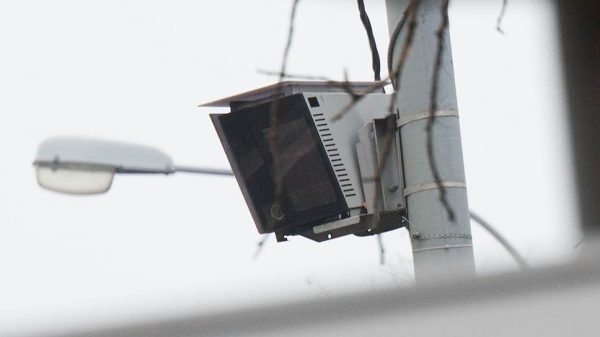
In general, video recording cameras work according to the following scheme:
- The camera catches the commission of the offense.
- After that, she fixes it so that the state registration plates of the car are visible in the picture.
- Then the resulting photos are automatically transferred to the servers, where the data is processed and the owner of the car is determined.
- Finally, a so-called letter of happiness is sent to the address of the owner of the car, the violation of which is recorded: a message with a protocol and a decision on the imposition of an administrative fine. It is accompanied by pictures from the automatic complex of video recording of traffic police violations. This letter is sent with acknowledgment of receipt. From the moment of receipt of the letter, the countdown of the period for payment of the fine begins.
Video recording is a relatively new way to detect traffic offenses. It came to Russia from the EU countries, where it has been successfully used for many decades and has helped to reduce crime and deaths on the roads, as well as to optimize the staff of law enforcement officers.
Video: about the operation of video and photo recording systems for traffic violations at intersections
Penalties for driving at a prohibitory traffic light
All options for behavior prohibited by law in the field of traffic and pedestrians on the roads are contained in Chapter 12 of the Code of Administrative Offenses of the Russian Federation. Which norm from the Code will be applied depends on the act and the circumstances of the commission.
Red light ticket
Inattention in relation to the colors of the traffic light or the gestures of the traffic controller is punished under Art. 12.12 of the Code. An absolutely definite sanction in the amount of 1 rubles has been established for this violation. The composition of the violation of the administrative law forms the passage not only on the red, but also on any sign that is recognized as prohibiting.
Penalty for crossing the stop line
The stop line is an element of road markings that indicates to the motorist the line beyond which he has no right to stop his car. As a rule, only regulated intersections are equipped with stop lines, but they are also found before ordinary pedestrian crossings.
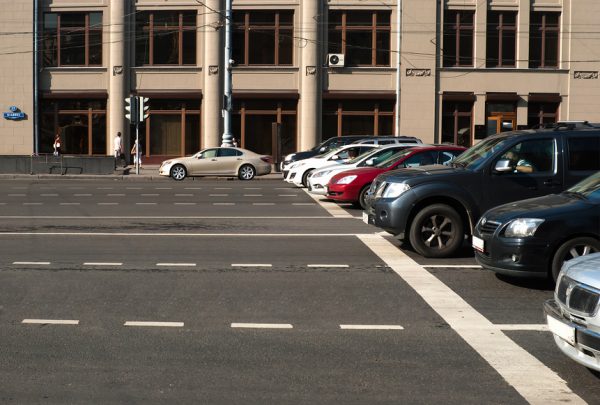

Stopping the car in front of the stop line is always mandatory. The only exception is the situation in which stopping at a yellow traffic light is impossible except by means of emergency braking. In this case, the driver is instructed to move on (clause 6.14 of the traffic rules of the Russian Federation). Under Part 2 of Article 12.2 of the Administrative Code, a fine of 800 rubles is imposed for ignoring the stop line.
Penalties for driving on a prohibitory signal of railway tracks
Regulations on how to be a car owner in places equipped for traffic on railway tracks are contained in the SDA. In particular, it is forbidden to leave for the crossing (clause 15.3 of the traffic rules of the Russian Federation):
- when the barrier is closed or beginning to close (regardless of the traffic light signal);
- with a prohibiting traffic signal (regardless of the position and presence of the barrier);
- at the forbidding signal of the duty officer on the crossing (the duty officer is turned to the driver with his chest or back with a staff raised above his head, a red lantern or a flag, or with his arms outstretched to the side);
- if there is a traffic jam behind the crossing that will force the driver to stop at the crossing;
- if a train (locomotive, railcar) approaches a moving line of sight.
The sanction for misbehavior at crossings is defined by Art. 12.10 Administrative Code of the Russian Federation. A financial penalty of 1000 rubles is due to a driver who gets on a railway crossing due to a traffic jam. The same fine is due to the driver who opened the barrier without permission, as well as when moving along the tracks in front of the train.
The heaviest punishment is due for 3 such “faults” of a motorist:
- the actual passage through the tracks to a prohibiting traffic light or with a closed (closing) barrier;
crossing of tracks outside a specially equipped place (crossing);
- stop at the crossing.
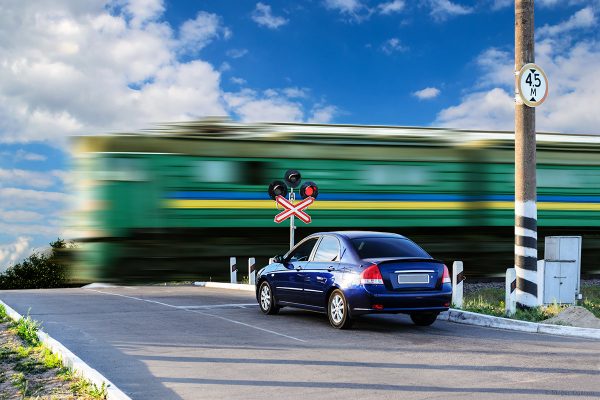

Penalty for repeated violations
From the meaning of Art. 4.2 and 4.6 of the Code of Administrative Offenses, it can be concluded that the commission of a homogeneous offense within a year from the moment of the previous one is considered repeated.
There are two main views on the concept of homogeneity both in science and in judicial practice. According to the first, offenses that have one generic object, that is, provided for by one chapter of the law, are considered homogeneous. This opinion is shared by the highest instance of our judicial system. Another approach is to recognize as homogeneous only those offenses that are provided for by one article of the Code of Administrative Offenses. This position was professed by the main arbitration court of the country, which has now been abolished. To date, in the courts of general jurisdiction, in which cases of violation of traffic rules fall, the practice has developed under the influence of the position of the RF Armed Forces.
Ignoring a prohibitory traffic light twice entails a fine of 5 rubles or suspension from driving from three to six months (parts 000, 1 of article 3 of the Code of Administrative Offenses). Repeated neglect of the rules at railway crossings is punishable by deprivation of rights for one year (part 12.12 of article 3 of the Code of Administrative Offenses of the Russian Federation).
Checking and paying fines online and 50% discount
In the twenty-first century, almost any operation can be performed without leaving home, using the capabilities of the Internet. Checking and paying fines is no exception to this general rule. Of course, even today, if you wish, you can pay a fine by standing in line at a bank, but in this article the emphasis will be on ways to pay fines online:
- Through the website "Gosuslugi". This site requires you to register if you have not already done so. After that, you will be able to check and pay the fines of the traffic police by the driver's license number.
- Through the official website of the traffic police. It has an intuitive interface. However, verification and payment are carried out according to the state registration plate and the number of the certificate of registration of the vehicle, which are not always at hand.
- Through electronic payment systems. They are usually very conveniently organized, but require a significant commission.
Not all payment methods are listed above. The driver can, for example, use the mobile application of his bank to pay the fine, if he provides such a service, or seek help from special sites like the RosStrafy website. The main thing that unites them is the ability to quickly and effortlessly pay the existing fines of the traffic police in a way convenient for you.
From January 1, 2016, the speed of payment of the fine may allow halving its original size. So, if you pay a fine for all of the listed offenses (except for repeated driving at a prohibitory traffic light), no later than 20 days from the date of its imposition, you get the right to a 50% discount.
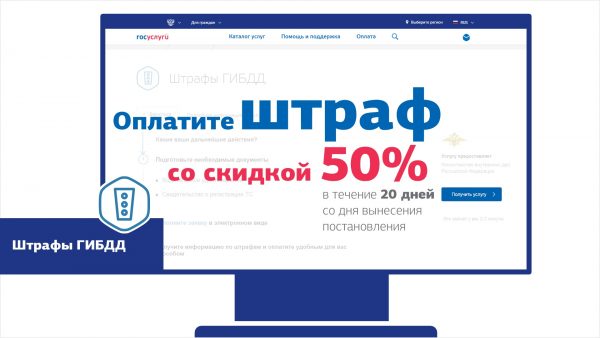

Appeal of fines: procedure, terms, necessary documents
Appeal of administrative penalties is carried out according to the rules established by Chapter 30 of the Code of Administrative Offenses.
It should be said that the appeal procedure is made as simple and understandable as possible for any citizen, even those who are not even tempted by the experience of court battles. In addition, do not be afraid of an appeal, because it does not threaten you with anything. In the administrative process, as well as in the criminal one, there is a so-called prohibition on taking a turn for the worse. Its essence is that, on your complaint, the court has no right to increase the originally imposed penalty. Finally, an administrative appeal is not subject to state fees, and therefore will not cost you anything (part 5 of article 30.2 of the Code).
The first thing you need to do is set a time limit for filing an appeal. It is 10 days from the date of receipt of a copy of the decision (part 1 of article 30.3 of the Code of Administrative Offenses of the Russian Federation). Restoration of the missed deadline is possible only if there is a good reason. The most obvious example would be a serious illness for which a person was hospitalized.
Then you should choose the authority to which you intend to file a complaint. There are two options: an appeal to a higher official or a court. Each of the options has its pros and cons. So, an official is given only 10 days to consider a complaint, while the court is given 2 months (parts 1 and 1.1 of article 30.5 of the Code).
Finally, having decided on the procedure for appealing, you should write and send a complaint. It must contain the following required details:
- At the top of the complaint, its intended recipient is indicated: the name and address of the court or traffic police authority. Your data is also indicated there: name, address and contact phone number.
- After that, its name is indicated in the center of the document.
- The main part sets out the main arguments and motives for which you consider it necessary to cancel the inspector's decision. Your opinion must be supported by references to evidence and norms of the law.
- In the pleading part, you indicate everything with which you apply to the court or the traffic police official.
- The complaint must be accompanied by all documents relevant to its subject, and list them in a list.
- At the end should be the date of its writing and your signature.
The completed complaint shall be sent to the address of the authority by registered mail.
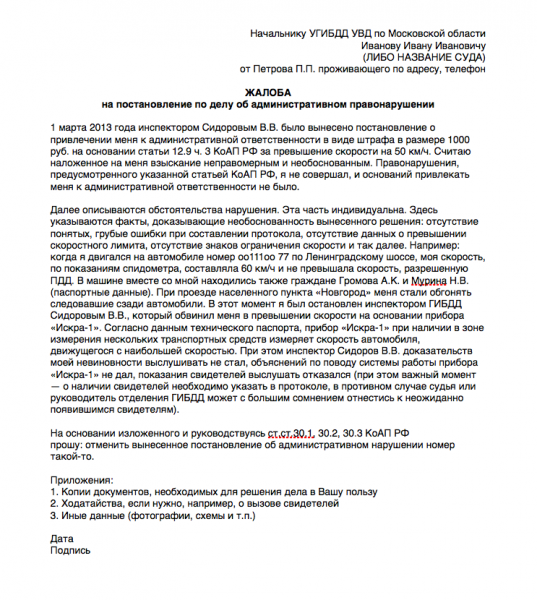

Peculiarities of Appealing Decisions on Violations Detected Through Video Recording
Decisions on administrative offenses issued in the form of “letters of happiness” are quite difficult to appeal, since there is no so-called human factor when a traffic violation is detected and a protocol is drawn up. Nevertheless, there are cases of successful appeal of decisions in this form.
The fact is that video recording systems successfully identify vehicles by state numbers, but not the drivers who drive them. In this regard, the owner of the car becomes the subject of liability by default (part 1 of article 2.6.1 of the Code). Therefore, the real chance to get rid of the need to pay a fine is to prove that another person was driving at the time of the violation or the car was stolen.
According to paragraph 1.3 of the Decree of the Plenum of the Supreme Court of the Russian Federation dated October 24.10.2006, 18 No. XNUMX, the following can serve as evidence of this fact:
- a power of attorney for the right to drive a car issued in respect of a person;
- a civil liability insurance policy with a mark on admission to driving a vehicle of such a person;
- lease or leasing contract for transport;
- testimonies of eyewitnesses and (or) the person who was driving the car at the time of fixing the violation of traffic rules.
Video: how to challenge traffic police fines


Watch this video on YouTube
Obey the rules for crossing railroad tracks and sections of roads equipped with traffic lights, as they are designed to ensure the safety of all road users. In addition, severe sanctions are sometimes provided for their violation, up to suspension from driving for 6 months. If they are trying to punish you for an offense that you did not commit, then do not be afraid to defend your rights and, if necessary, contact higher authorities.

